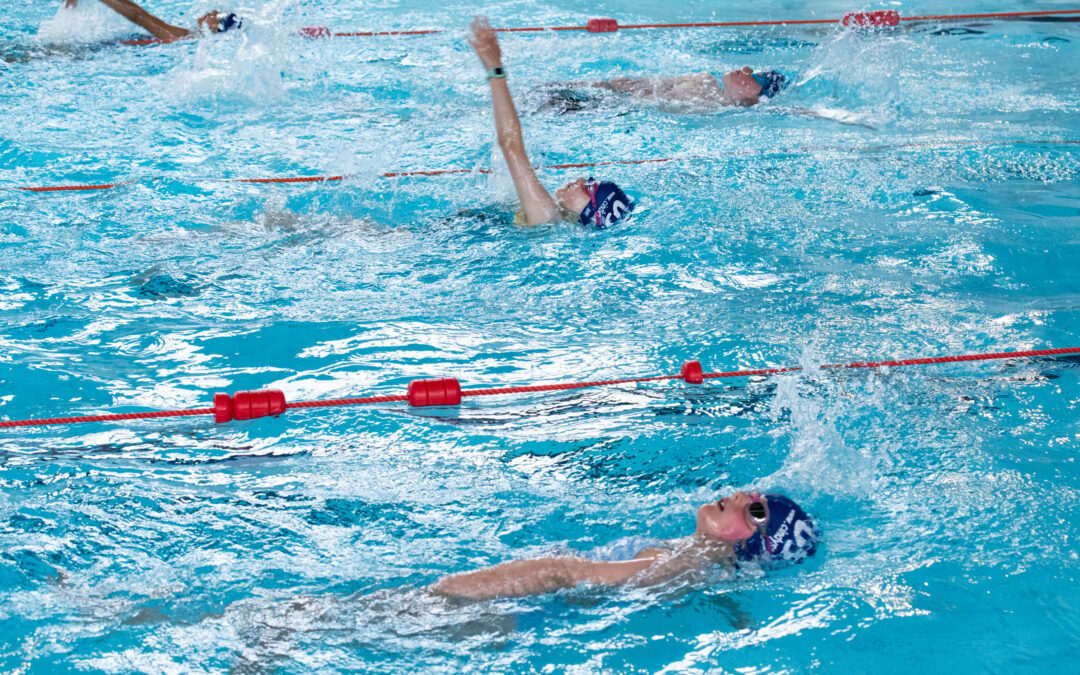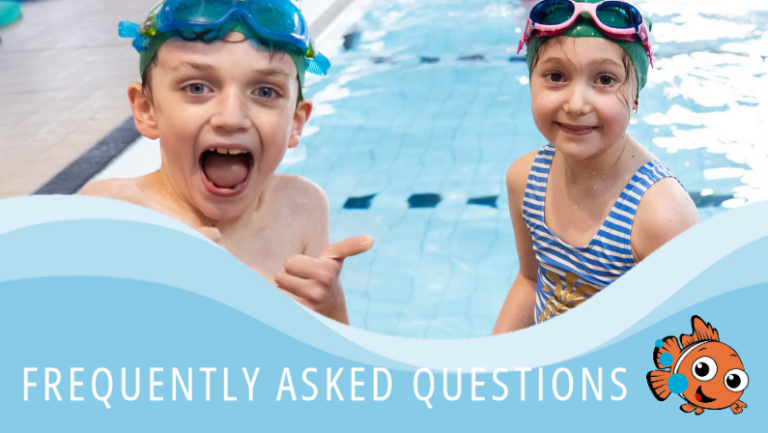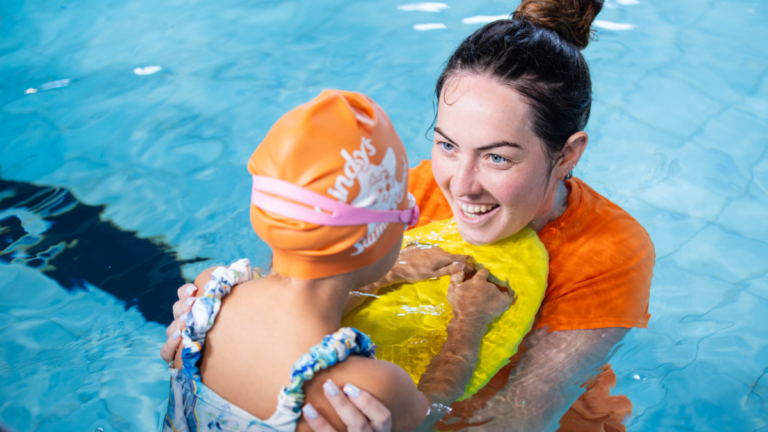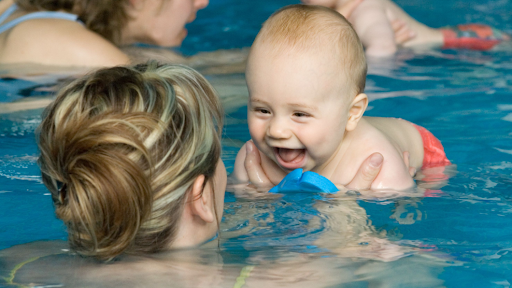Did you know that 96% of children stop swimming lessons too soon?
According to the latest research from Swim England, 3.4 million children aged 7 to 11 who quit lessons fail to meet the recommended swimming standards.
At Cindy’s, we understand the incredible benefits of sticking with swimming lessons for as long as possible. Not only do lessons offer physical and mental health advantages, but they also support performance in other sports and help kids feel confident at water parks, the beach, and during water sports (kayaking, anyone?)
Plus, for teenagers, swimming skills open up fantastic part-time job opportunities, such as lifeguarding or teaching swimming—great ways to earn while at college or university.
Of course, we know that not everyone wants to continue swimming lessons forever. So how do you decide when it’s the right time to stop?
Stopping Swimming Lessons: What You Need to Know
In this article, we’ll cover:
- The age when most children drop out of swimming lessons
- Essential swimming skills your child should master before stopping lessons
- Why continue swimming lessons beyond the basics?
- When you shouldn’t stop swimming lessons, including
– If they don’t seem to enjoy it right now
– To take a break and come back to it later
– Because their friends have stopped - What to do If my child has quit swimming lessons too soon?
The Age When Most Kids Drop Swimming Lessons
Children today lead busy lives, juggling school, homework, and a variety of extracurricular activities like sports and music. With so much on their plates, swimming lessons are often one of the first things to be dropped — typically around the ages of 9 or 10.
However, for most children, this is too soon. Ideally, we recommend continuing lessons until at least 12 or 13 (or even longer). This extra time allows them not only to develop essential swimming skills but also to reinforce them, ensuring they become second nature and remain in their muscle memory for life.
Essential swimming skills your child should master before stopping lessons
According to Swim England, a competent swimmer should be able to:
- Float to live – perform a star float for at least 60 seconds
- Tread water for at least 30 seconds
- Swim in clothing to experience how it feels in an emergency
- Swim at least 100 metres comfortably and without stopping
At Cindy’s, we believe these are just the bare minimum—a starting point, not an endpoint.
Parents should ask themselves:
Would my child have the lifesaving skills needed to survive if they got into difficulty in the water? When my child starts swimming unsupervised as a teen, will they be as safe as possible?
We want every swimmer to be strong, confident, and fully aware of water safety risks.
That’s why we also encourage children to:
Achieve Competency in A Range of Strokes
Use a range of strokes effectively (front crawl, backstroke, and breaststroke) – a skill also recommended in the National Curriculum and able to swim at least 150 to 200 metres comfortable.
Respect Water Safety
Understand and respect water safety rules in different aquatic environments (e.g., never swim alone, identify hazards such as cold water, rips and currents). Learn how to enter and exit the water safely.
Feel Confident Underwater
Learn a broad range of survival skills
To ensure these skills are mastered, we recommend continuing lessons until at least stage 6.
By doing so, you’ll be giving your child the best chance to stay safe and confident in the water for life.
Why Continue Swimming Lessons Beyond the Basics?
While reaching the required swimming standards is a great milestone, stopping too soon can mean missing out on huge benefits—especially for kids aged 11, 12, and into their teens.
The biggest reason to continue swimming lessons into the more advanced stages is safety. Strong, confident swimmers with a solid understanding of water safety are at a significantly lower risk of drowning.
But the benefits go far beyond safety:
- Physical health – Swimming helps maintain fitness, builds endurance, and reduces the risk of childhood obesity.
- Mental well-being – Being in the water relieves stress and boosts endorphins, improving mood and mental health.
- Confidence & resilience – Overcoming challenges in swimming lessons helps build self-belief that carries over into other areas of life.
- Gateway to water sports – Continuing lessons opens up exciting opportunities like open-water swimming, canoeing, paddleboarding, and surfing.
- Career opportunities – Strong swimmers can train to become lifeguards or even swimming instructors—fantastic part-time jobs during college and beyond.
Still unsure? Read more about why swimming lessons are so valuable for older kids.
When You Shouldn’t Stop Swimming Lessons
If you’re considering stopping swimming lessons for any of the following reasons, think again—there may be a better solution!
“My child doesn’t like swimming lessons”
It’s not uncommon for children to go through phases where they don’t enjoy swimming lessons. But rather than quitting, it’s important to identify the root cause and find ways to help them regain their confidence and enthusiasm.
Ask yourself:
Is it sensory issues, like discomfort with water temperature or noise?
Are they struggling to keep up with friends or feeling self-conscious?
Do they lack confidence in a particular stroke or skill?
Once you pinpoint the issue, take action:
- Speak to their teacher – Can lessons be adapted to make them more enjoyable?
- Consider a smaller class – A more personalised approach might help.
- Try fun sessions – Less structured, play-based swimming can rebuild confidence.
- Go swimming together – Family swim sessions can make the pool a more positive place.
“We’ll take a break and come back later.”
The risk of pausing lessons is that children quickly forget what they’ve learned. This often leads to needing even more lessons when they return, making progress slower and more frustrating. Staying consistent is the best way to ensure they retain their skills.
“Their friends have stopped.”
It’s natural for kids to want to follow their friends, but swimming is an essential life skill and also a great way to make new friends! Encourage them to stay focused on their own progress, make new friends in class, and most importantly, reach a level where they can swim confidently and safely.
Bottom line? Keep swimming lessons going until your child is a strong, skilled, and confident swimmer—it’s a decision they’ll thank you for later!
What to Do If My Child Has Quit Swimming Lessons Too Soon?
If your child has stopped swimming lessons before becoming a strong, confident swimmer, it’s never too late to get them back on track. Start by assessing their current ability—can they swim at least 100 metres without stopping, tread water, and float for at least 60 seconds? If not, consider re-enrolling them in lessons to rebuild their skills. If they want to progress even further, speak to us at Cindy’s about which stage lessons would work for them.
If they’re hesitant about returning, try making swimming fun again by taking them to family swim sessions. This can help them regain confidence in a low-pressure environment. You could also try 2:1 or 1:1 to ease them back in.
The key is consistency—encouraging regular swimming will help reinforce their skills and ensure they stay safe and capable in the water for life.

Stage 4+ Starter Swim Kit
Our Stage 4+ Swim Kit contains all you need for more advanced children’s swimming lessons: kids’ flippers, kids’ kickboard, and a pull buoy to train balance, technique and strength, all neatly stored in a convenient water resistant swim bag.
£60.00
Want to find out more about swimming lessons for kids at Cindy’s Swim School? Please don’t hesitate to contact us with any questons you might have or go right ahead and book a class.
 Our Christmas Swim Shop is now open! Original swimming gift ideas from babies to adult learners!
Our Christmas Swim Shop is now open! Original swimming gift ideas from babies to adult learners! 





